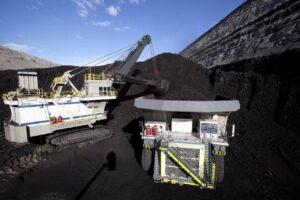Five of six pending wind farms in Victoria have been given final development approval by the state government after meeting a deadline to begin construction. One wind farm, a 21-turbine, 42MW project at Naroghid proposed by Windfarm Developments did not make the cut, and will have to present a revised proposal as its current plan does not conform with new wind farm guidelines.
Victoria Planning Minister Mathew Guy said the five wind farm approvals to be made were Union Fenosa’s 31-turbine, $140 million Hawkesdale wind farm near Warrnambool, and its 68-turbine development at Ryan Corner, Yambuk, Acciona’s 189MW Mount Gellibrand project, NewEn Australia’s 15-turbine development at Salt Creek, 15, and WindFarm Development’s 20-turbine development at Woolsthorpe. Work on all those projects had to start by Thursday this week to avoid coming under the new guidelines.
Guy said about 14 other wind farm projects were in the pipeline for Victoria and a “number are coming through to be considered before the end of the year.” All told, there are around 20 wind farm projects – a total of 2000MW of capacity with a capital cost of around $4.7 billion – that received initial approval under the previous state government, but need to meet certain milestones – such as construction starts – or they will be forced to reapply under the new restrictive guidelines of the Baillieu coalition government. Friends of the Earth estimate that more than $500 million of projects have already been lost because of the new rules.
Solar thermal boost in India
The solar thermal energy market is showing signs of life, particularly in India, where German electronics giant Siemens has won an order to supply 17,000 of its UVAC 2010 solar receivers to a 50MW concentrated solar power in Rajasthan. The contract takes its total orders for solar thermal projects to 350MW just in the last 6 weeks.
All are located in Rjasthan and have been generated under the country’s National Solar Mission, which aims to have 22GW of solar installed in the country by 2022. “The Indian CSP market is rapidly developing, and with this step we strengthen our business for CSP technology,” Shmuel Fledel, the head of Siemens Solar Thermal Energy business unit, told PV Magazine.
The largest market for solar thermal is in Spain, with 2,500MW of projects approved, although the government is under pressure to reduce subsidies to these projects because of the country’s debt issues. It is yet to decide on what action it will take.
The top 10 solar PV companies
The US-based Lux Research has published report on the biggest solar module manufacturers in the world in 2011. The report notes that the top 10 manufacturers accounted for 12.5GW of solar panels, or 44 per cent of the global market. The US-based First Solar remains the biggest, and Chinese companies dominate the list, but the research found that Japanese and South Korean solar panel companies rose in ranks “Expect to see a major rise in market share from Japanese and Korean suppliers, while European module manufacturers struggle with financial woes and reduced government incentives for solar in Europe,” Lux Research noted.
OECD’s bleak emissions warning
The OECD has warned that global greenhouse gas emissions could rise by up to 50 per cent by 2050 unless more ambitious climate policies are introduced and the global energy mix changes. It said that at current rates, fossil fuels will supply about 85 per cent of energy demand in 2050, which will have increased by around 80 per cent from current demand, and which would lead to a 50 per cent lift in greenhouse gas emissions. The OECD said this would translate into an increase in global average temperature of 3C to 6C.
It predicted that at current rates, fossil fuels such as oil, coal and gas will make up 85 per cent of energy sources, with renewables, including biofuels, to make up 10 per cent and nuclear the rest. The OECD said that to prevent the worst effects of global warming, international climate action should start in 2013, a global carbon market should be established and the energy sector transformed to low carbon.








